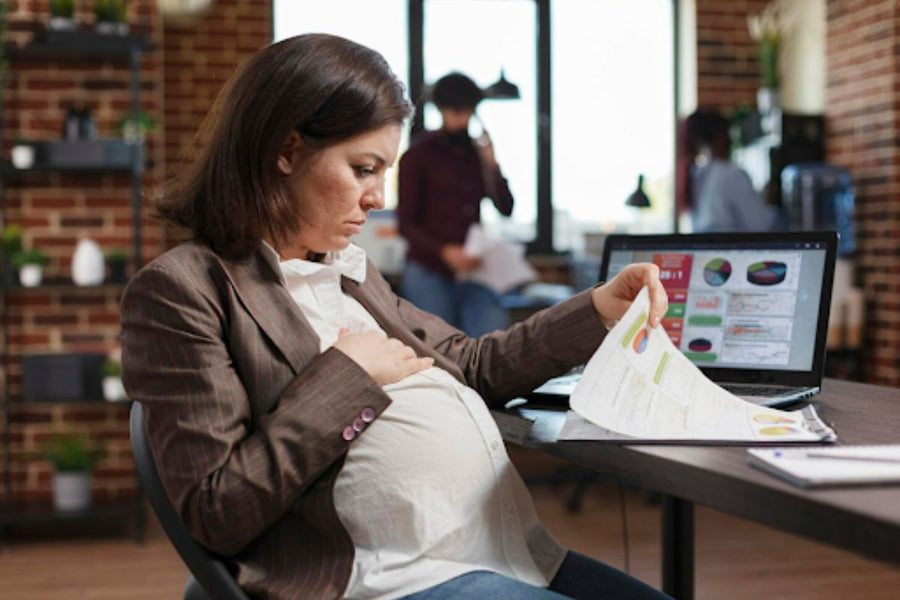As a new mum, your body goes through a lot. There’s lots of discussion out there about the stretch marks, the bleeding, and the C-section scarring, but one thing that doesn’t get talked about as much as it should is nipple chafing and nipple care. That’s right: when you breastfeed, your nipples can get pretty beat up, especially if you’re on top of your postpartum fitness game.
But just the same way as a bit of education and the right care tips can help you through most of the other physical changes that come with new motherhood, your nipples will be okay, too. Read on to learn everything you need to know to keep them feeling healthy and comfortable.
What is Nipple Chafing?
Nipple chafing refers to the mild, red rash that can develop on the nipples as a result of friction, moisture, and/or irritating fabric. It’s similar to what can happen between your thighs when you walk around in shorts on hot days. In fact, it’s even similar to diaper rash.
When you’re a breastfeeding mum, nipple chafing can happen from a few things: most commonly exercising, breastfeeding, and pumping breast milk. All of these activities can be a little harsh on the nips, involving the rubbing of fabric or moisture on this sensitive skin.
That’s why it’s so important for breastfeeding mums or new mums who work out to educate themselves about preventative measures they can take to prevent nipple chafing. Taking this step can save you a lot of discomfort and soreness.
Nipple Care While Breastfeeding and Pumping
While breastfeeding should never hurt, the truth is that it can be a little bit uncomfortable to the nipples. After all, a hungry baby’s mouth or a highly-functioning suction pump pulling, twisting, and sucking the tender nip can easily cause discomfort. But there are steps you can take to care of your nipples and reduce the pain that you might experience as a result of breastfeeding and pumping.
First, make sure that your baby (and pump) is latching onto your nipple properly. An imperfect latch can cause painful breastfeeding. If your latch doesn’t include both the nipple and some of the areola, speaking to a lactation consultant can help you troubleshoot.

Additionally, don’t use soaps or shampoos on your nipples when you shower. Your nipples will actually produce their own oil that moisturizes and protects them, and the harsh chemicals found in soap can strip this helpful oil. Instead, washing with just water is totally fine.
After washing, air-dry your nipples or gently dab them with a towel to avoid irritating your nipples further.
There are also some products out there that you can use specifically to treat dry, painful nipples. These include various nipple creams - usually made from lanolin - and silicone nipple shields. However, one of the best solutions that you can try comes straight from your body. It may sound a little Goop-y, but rubbing a few drops of your own breast milk onto your nips after a breastfeeding session can help heal damaged nipples.
And if you find that breastfeeding is painful even after taking these steps, we highly recommend taking advantage of one of the many resources available to you like midwives, doctors, lactation consultants, and breastfeeding classes. You can also reach out to our Ask an Expert service for help from a team of maternal health experts.
Learn more: Love, hair growth, and leaky boobs? Here’s what you need to know about oxytocin and prolactin
Is Exercise Safe While Breastfeeding?
You may wonder if it’s safe to exercise while breastfeeding. Maybe you’ve heard that working out can impact your milk supply. Or maybe you’re just considering the fact that, even in the best of times, working out can put a lot of strain on your breasts - especially when they’re sore and tender - so does that mean that you shouldn’t be exercising after giving birth?
The truth is that exercise has no impact on your breast milk production, so you shouldn’t hesitate at all to start a post-pregnancy workout plan even if you’re breastfeeding. In fact, a good postpartum fitness plan can even benefit you by giving you more energy and improving your mood, helping you make it through late-night breastfeeding sessions.
Just make sure to stay extra hydrated, as both exercise and breastfeeding can dehydrate you, and do your best to nurse your baby before your workouts. This way, your breasts will feel less engorged during your postpartum workout program and you can exercise more comfortably. And, of course, a well-designed sports bra can do wonders when it comes to supporting your breasts.
Nipple Chafing While Exercising
To avoid nipple chafing due to exercise, there are a few things you can do.
First, lubricate your nips before (and even during) a workout so that they don’t get irritated by the fabric of your sports bra. You can use something as simple as petroleum jelly (although it can be hard to wash out of fabric), or products specifically formulated for this purpose like My Expert Midwife’s No Harm nipple balm trio.
There are also a variety of products that work as a physical barrier between your nipples and the fabric of your bra. These include nipple tape, nipple covers, and breast shells. Which of these works best for you will be an individual choice.
Finally, it’s also recommended to work out in fabric made for exercise, which usually has sweat-wicking and absorbent properties that will prevent your clothing from being too harsh on your nipples.
If you do find yourself experiencing nipple redness, flaking, burning, stinging, pain, or even bleeding after working out, it’s probably best to take a few days off of your exercise program to give yourself time to heal before getting back into it.
Nipple Chafing Recovery Tips
If you’ve found yourself reading this article after you already suffered from nipple chafing rather than before, there are some things you can do to help you recover as quickly and easily as possible.
The first is the suggestion we mentioned above regarding anointing your nips with your own breast milk. Not only is this free and convenient, but it can really help heal the pain of nipple chafing.
Another option is to use hydrogel nipple pads that are made to soothe sore nipples by offering a cooling sensation. You can even keep these in the fridge to make them more effective.

One other thing you can do is apply a thin layer of breastfeeding-safe nipple cream over your nips to help keep them moisturized and recover faster from any damage.
We do want to note that not all nipple pain is created equal. In the long run, nipple chafing is relatively harmless and can be healed pretty quickly. But if your nipples are whitish or bluish in colour, have white spots of flakiness, feel hot to the touch, or are excreting pus, it might be something else, like thrush, Raynaud’s disease, or infection. If you think this might be the case, see a doctor who can help you out.
The important thing is that nipple pain shouldn’t stop you from breastfeeding or working out if you want to, as both of these things have a tremendous number of benefits to both you and your baby. Just take a little extra care of your nips and everything should be smooth sailing.
Learn more: The Post-Breastfeeding Boob Evolution


